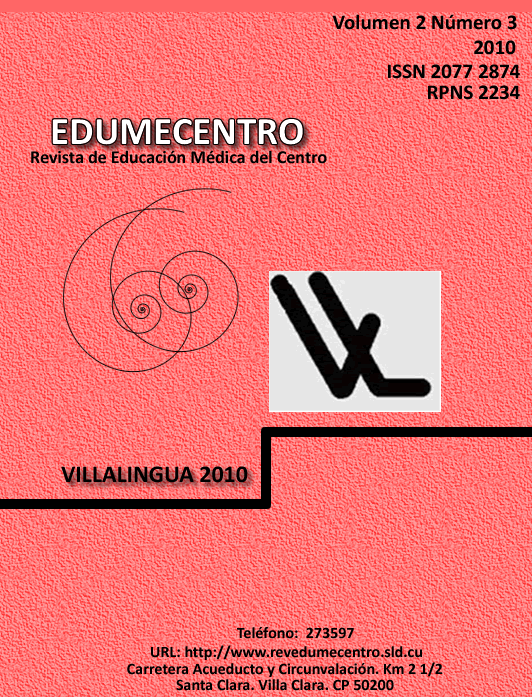Task based learning in communicative foreign language teaching
Keywords:
Task based learning, communicative teaching, foreign languages.Abstract
The objective of the article is to present two methodologies for the use of the task based learning approach in communicative foreign language teaching, as well as to offer the advantages of this approach vs the traditional Presentation-Practice and Production methodology. The article was written after a deep bibliographic review and after it was put into practice in the authors’ teaching learning processes. With the use of this approach, the students begin the communicative task using the language they have learned in previous lessons or in other sources of information. Then, they speak or write about the way they did the task and compare their findings. At a certain point they can listen to recordings of other doing the same or a similar task or they can read something related to the topic or relate this with their experience in doing the task. After the task is done and reported, then, attention is guided towards specific aspects of language form. Aspects that occur naturally in the recordings they have listed to or in the texts they have read.Downloads
Download data is not yet available.
Published
2013-02-09
How to Cite
1.
Recino Pineda U, Laufer M. Task based learning in communicative foreign language teaching. EDUMEC [Internet]. 2013 Feb. 9 [cited 2025 Dec. 29];2(3):20-7. Available from: https://revedumecentro.sld.cu/index.php/edumc/article/view/88
Issue
Section
ARTÍCULO ORIGINAL
License
Los autores que publican en esta revista están de acuerdo con los siguientes términos:- Los autores/as conservarán sus derechos de autor y ceden a la revista el derecho de primera publicación de su obra, el cuál estará simultáneamente sujeto a una Licencia Creative Commons Reconocimiento-NoComercial-CompartirIgual 4.0 Internacional (CC BY-NC-SA 4.0) que permite a terceros compartir la obra siempre que se indique su autor y su primera publicación esta revista.
- Los autores pueden establecer por separado acuerdos adicionales para la distribución no exclusiva de la versión de la obra publicada en la revista (por ejemplo, situarlo en un repositorio institucional o publicarlo en un libro), con un reconocimiento de su publicación inicial en esta revista.
- Se permite y se anima a los autores a difundir sus trabajos electrónicamente (por ejemplo, en repositorios institucionales o en su propio sitio web) antes y durante el proceso de envío, ya que puede dar lugar a intercambios productivos, así como a una citación más temprana y mayor de los trabajos publicados (Véase The Effect of Open Access) (en inglés).










